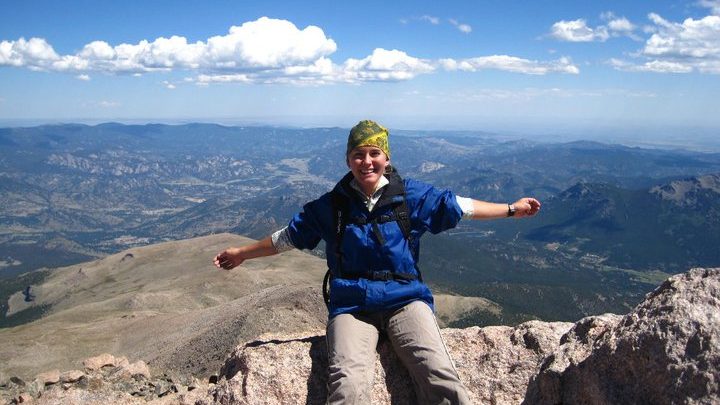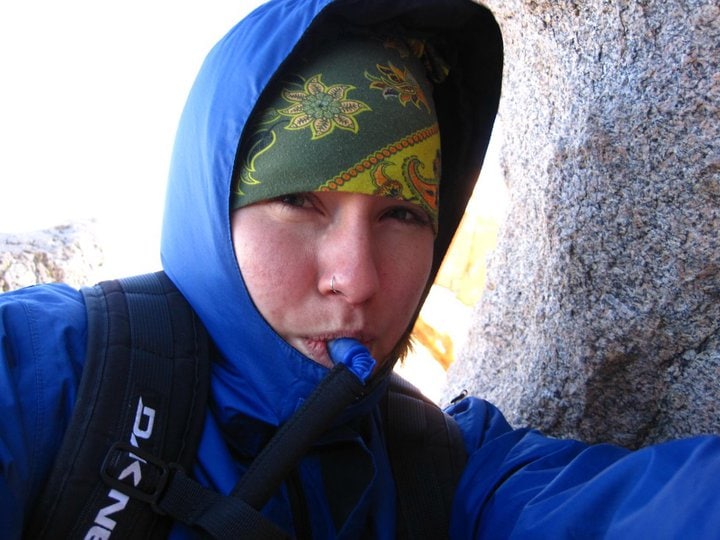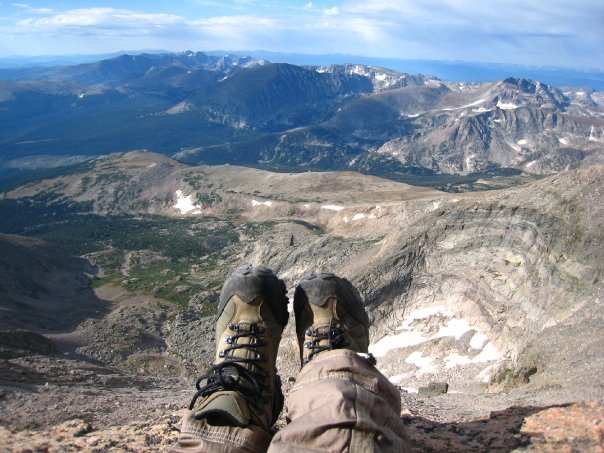Adventures in T1D: Summiting Your Fears
Nature and travel can heal your body and soul, and conquering big adventures gives you a better perspective on living with diabetes

When I was in college, a coworker and I began planning for the ultimate hike. We wanted to climb Longs Peak, a fourteener located in the Colorado Rockies not far from where we lived. We were both avid hikers, but this was a challenge, unlike anything we had faced before.
Longs is ranked as the 15th most difficult summit out of the 58 high-altitude peaks in the state whose elevation exceeds 14,000 feet. While it does have its fair share of dangerous sections, including a walk along a three-foot-wide ledge that drops more than 3,000 feet to the valley below and a mile-long climb up a near-verticle scree field, what truly makes this mountain so hard to conquer is the length of the trail.
Most fourteeners average about seven or eight miles round trip. Longs is 14.5 miles. Combine that with the 5,100 feet in elevation gain and an already difficult route, and you have a recipe for disaster.
And that’s all before you even consider the fact that I had been diagnosed with type 1 diabetes less than six months earlier.

While I understood that my diabetes put me at an increased risk of experiencing an emergency on the side of that mountain, it never once threatened to change my plans. If anything, having diabetes transformed something I wanted to attempt into something I had no choice but to conquer.
While not all diabetics are likely to share that point of view, I do believe there’s something to be gained from the mindset that diabetes should not stop you from pursuing the things that you want. Especially when those things are, within themselves, incredibly healing.
Why the Rewards Outweigh the Risks
Anytime a diabetic steps out of their house and away from their supplies, insulin stash, and a cupboard full of juice boxes and premeasured snacks, they are increasing their risk of something going wrong. And stepping way out, say, all the way into the wilds of nature or to jump on a plane to an exotic destination greatly increases those risks.
But at the same time, doing things like hiking, camping, traveling, and yes, even mountain climbing, can have an extraordinarily positive effect on a diabetic’s mental outlook.
Diabetes is a crushing condition to carry around every second of every day. Dealing with the constant blood sugar management, the emotionally powerful lows, and the numbing highs can quickly lead to feelings of isolation, anxiety, and depression.
The rewards of adventure far outweigh the risks.
Nature Can Heal
People have always gravitated to nature during times of stress but, until recently, we never truly knew the power nature has to heal us.
Spending time in nature has been proven to reduce blood pressure, feelings of anxiety, and even pain. These are all important things to consider for diabetics who are more likely to suffer from cardiac complications and pain associated with neuropathy. But, even more important, is nature’s ability to distract us from our everyday lives.
Humans find trees, plants, and water inherently interesting. When we are surrounded by a natural setting, whatever thoughts have been tumbling around our minds are quickly replaced as we focus on the here and now.
This focus on the now is an incredibly useful tool if you find yourself overwhelmed by the realities of life with diabetes.
Even beyond our own thoughts, nature can transform us. People who spend time in nature are more empathetic and altruistic. Studies looking at crime in poor urban communities have even reported an association between the presence of trees and green spaces and a reduction in crime. Nature’s ability to help you feel more connected to those around you can make a huge difference in the outlook of someone who feels naturally isolated by their condition.
Traveling Increases Happiness
Escaping to nature isn’t the only way to unload the stress of living with a chronic condition. Studies have shown that travel abroad can also help heal your body and soul.
One study noted that traveling at least twice a year is associated with a lower risk of a heart attack. This is likely due to the natural reduction in stress that comes from getting away. Sure, there are short bursts of anxiety that come up during travel — the packing, the plane rides, navigating a foreign city — but the long-term reduction in stress has been proven to last for weeks after the vacation itself has ended.
Like nature, traveling can also help people feel less alone by connecting them to the larger world. Whether you are taking a trip to India to help distribute diabetes supplies to the locals or just lounging on the beach in the Bahamas, getting out of your house and experiencing other cultures can help put the hardships of diabetes into perspective.
Traveling is such a powerful force, that you don’t actually have to go anywhere to benefit from it. Studies have shown that just planning a trip can increase happiness even more so than receiving a physical possession.
Healing Beyond Happiness
Clearly, getting out in nature or taking a quick vacation abroad, or better yet, a long trip to some wild locale, has tons of physical and mental benefits for everyone. But as a diabetic, I believe there is one reason above all others to seek out adventure: To prove that you can.
Summiting Longs Peak was going to be a challenge with or without diabetes. But if I could make it to the top of that mountain in spite of my condition, then I knew there was absolutely nothing my diabetes could stop me from doing.
It took fourteen hours and left me sorer than I had ever been in my life, but I did it. I hiked alongside my nondiabetic friends in the pitch black of early morning and watched the sunrise at 12,000 feet. I stopped every couple of hours to check my blood sugar and was still the first one to the boulder field. And, after nearly ten hours of hiking, climbing, and scrambling, I stood on the top of a mountain and looked down on the amazing, beautiful world around me.

The feeling was so powerful and so uplifting that I did it again the next three years in a row.
My advice to all diabetics is to pursue your adventures, whatever they may be and no matter how impossible they may seem. With the right preparation and the right mindset, the thing that seems to carry the highest risk is likely to be the thing that brings you the greatest reward.